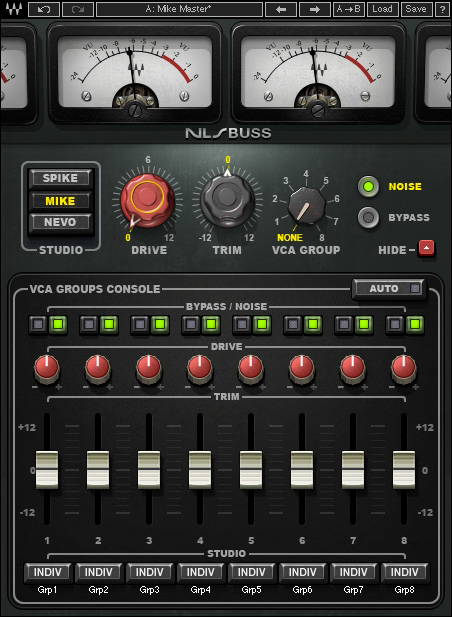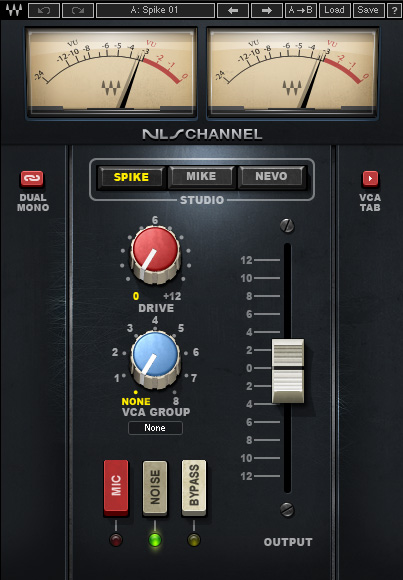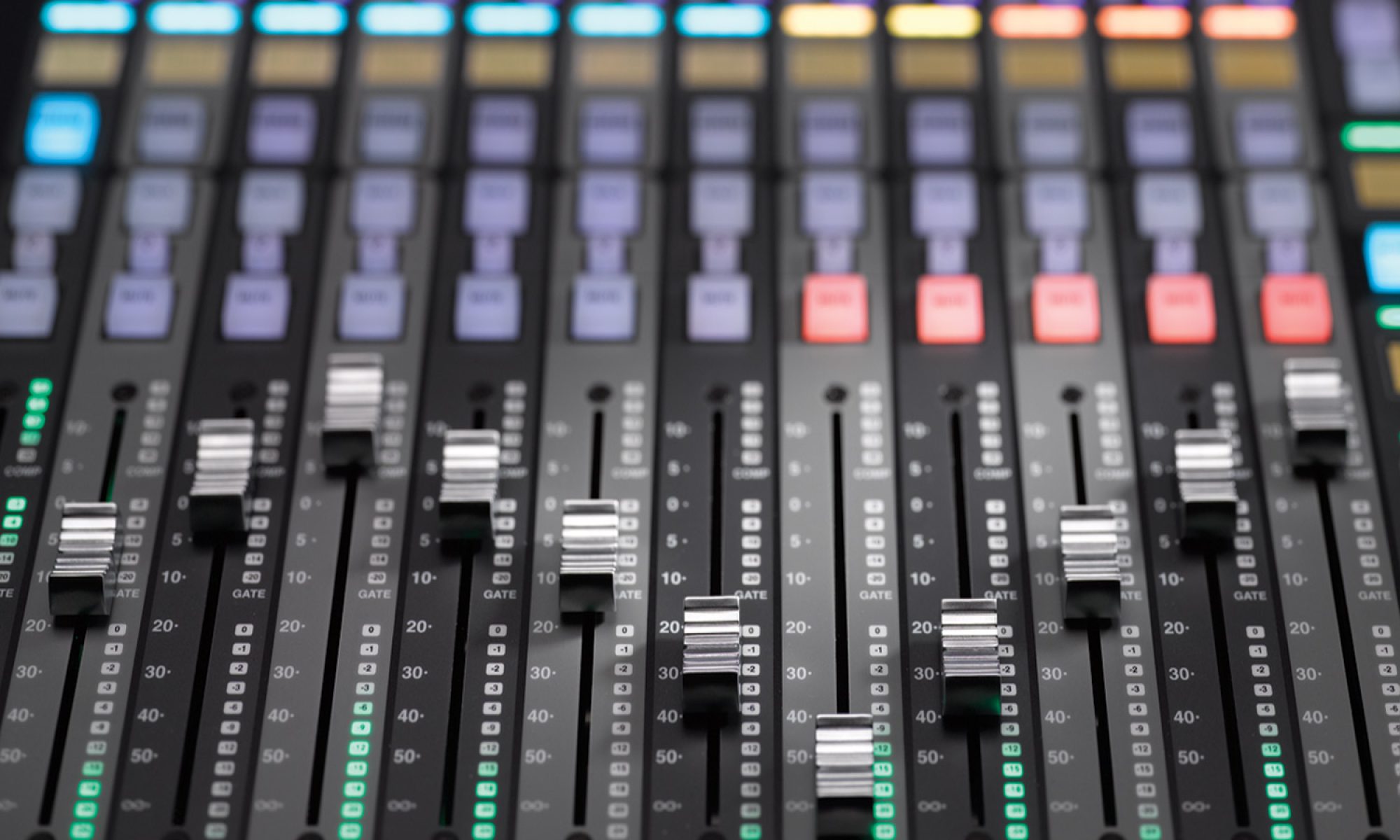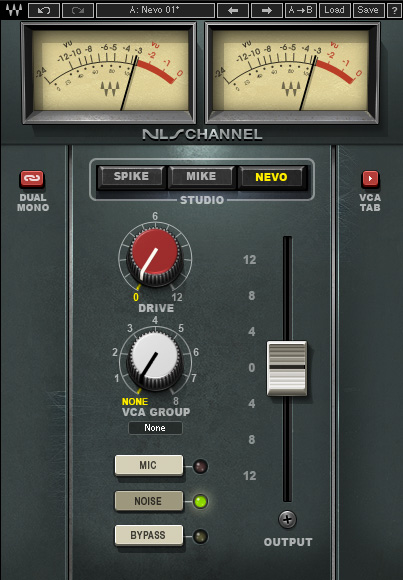The time is finally here for my favorite waves plugin. I know over the last few weeks that I’ve chosen some pretty popular plugins so there probably hasn’t been any surprises but that might change this week. I’ve already used the CLA-76 on week 1, the Vitamin Sonic Enhancer for week 2, the C6 Multiband Compressor as week 3, and last week talked about Scheps Omni Channel last week slotting in at #2, which doesn’t leave a lot of heavy hitters left to be the top dog. Well, I disagree. This plugin has a tremendous effect on my mix that I didn’t anticipate even in the slightest. It also is the reason why all of my band inputs go through waves soundgrid (I’m betting that last hint narrowed it down for you a bit). My favorite and most used plugin is the Waves NLS (non-linear summer). Yep, you read that right. Generally I have it on everything I mix.
So why the NLS? Well it’s a long story but I’ll try to sum it up. I’m what I call a middle school audio guy. I was taught and trained by basically all old school audio guys from the 70s, 80s, and 90s (basically I call old school anyone who was mixing before there was digital consoles) but have embraced the technology of the new guys. I think both methods have merits and basically cherry pick the best of both. Because of that, as I’ve embraced technology having experienced the hard parts of analog audio (i.e. – ground hums, buzzing, etc) I’ve always been a bit hesitant to re-introduce 50 or 60 cycle harmonic hums or subtle harmonics because I’d always felt that the advantage to the digital realm is it usually free of those issues. Combine that with the SSL L500+ that is my daily driver which has some great pre-amps I figured I was set for a smooth sounding pre-amps and natural yet transparent summing. But I kept seeing the NLS in use from some great guys and decided I’d give it a try when I saw it on sale for $29. At worst we’d throw it at the studio which is fed digitally just to get a little warmth but boy was I wrong. I set up a quick test in MultiRack (now SuperRack) where I could A/B the entire set of plugins on and off. I also decided that if I was going to test, I’d test all of it. I put the NLS at the end of each rack in waves(to emulate the sum in the fader rather than at the beginning to emulate the mic pre on the original console). Because I run the buss groups into waves as well I through the NLS Buss plugin on those as well and assigned each channel to the appropriate buss. After the time I turned it on and off I could hear a difference. The warmth that came from just turning it on, riding up the drive knob to the same number on each channel (be careful not to drive it too much, the plug can clip) and picking the model that fit each input (I started with Neve everywhere and adjusted from there). It’s difficult to quantify but when I don’t use it, I can’t get the same feelings about how the mix sounds as I do when I have it on. My mixes sound good but a little sterile. The NLS brings cohesiveness and a warmth that you can tangibly hear when you use it as it was intended.
The plugin includes models from these three legendary technicians consoles:
–The “magical” solid state console belonging to Mark ´Spike´ Stent (Björk, Muse, Maroon 5, Madonna).
–The classic console owned by Mike Hedges (The Cure, Siouxsie and the Banshees, Dido, Faithless, Manic Street Preachers, U2), heard on such timeless recordings as Pink Floyd’s The Dark Side of the Moon.
–The vintage British console customized for Yoad Nevo (Bryan Adams, Pet Shop Boys, Sugababes, Goldfrapp, Air)
(source: Waves.com)

It is easy to say and hear how different digital consoles sound over analog consoles. All the actual circuitry, the hums, the buttons and knobs, it all added up to something that affected the sound ever so slightly. In that sense, at the top end of analog boards from yesteryear all had their own “sound” that colored the mix in a usually a pleasant way. That’s what this plugin does for your digital consoles or DAWs. It isn’t the only plugin like it and in fact the CLA MixHub does this same thing but differently. You aren’t getting three models however, you are getting CLA’s console with all its’ sends, fades, knobs, etc. I’m not into the workflow solution that he offered so I’ll be sticking with NLS. I also love pulling up the plug and clicking through the three options and seeing which model sounds the best for what I’m trying to accomplish. Personally I use the NEVO side the most and usually end up with spike on acoustic inputs because of the rasp introduces. As with any tool it’s more about how you use than just having it. The NLS is pretty hands off but you still need to configure it properly (set the drive knob to be sure you aren’t overloading it, set buss, etc) for it to work right. Waves made a great video talking about and actually playing samples from NLS which can be found at this link.

This plugin is also a great way to bring up the sound of a lower end console that has the ability to integrate with waves. In essence that’s what waves can do for you and your mix. If you can’t afford to purchase a top end console that has that sound you’re looking for you can get almost there with plugins like NLS or CLA MixHub. The Behringer x32 doesn’t have the horsepower for something like a C6 but for under $1000 you can have access to all the tools the big name mixers have at their fingertips, including the NLS. So for about $4000 you can buy an x32 and everything you need for waves and emulate a $100,000+ console. But also remember, this plugin, as with all plugin, should be the icing on the cake. If the fundamentals of your mix aren’t there before you start tinkering in waves there isn’t a magic button or a plugin that will just fix all that.
Well that’s it for the series. Hopefully you’ve learned something new or thought of something you could improve in your workflow or at least been exposed to some new tools that you could use in your mix. For me just having thought through what my top 5 plugins are was good to be thinking critically about why I choose particular plugins over others and make sure that all my decisions line up with each other so there is consistency in my workflow. If you’ve thought of any questions, hit me up below in the comment section, on one of the facebook posts, or email me at daniel@studiostagelive.com. If you’ve enjoyed reading this series feel free to subscribe at this link and you’ll get an email whenever a new post is released here at Studio.Stage.Live.com. Happy mixing!

